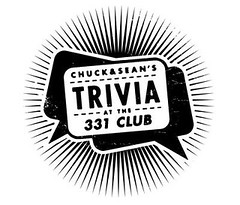By Joseph Hart and Edwin C. Hirschoff
University of Minnesota Press (October 2002)
MINNEAPOLIS'S SKID ROW just isn't what it used to be. In fact, all that remains of it is a flagpole situated at the corner of First and Hennepin, which once marked the spot where Nicollet looped around to meet Hennepin. "That post office there," Joseph Hart says, pointing across the street. "That used to be a notorious group of row houses where there was prostitution."
 Just now, at the base of this flagpole, Hart is parking his bicycle. He is a thin, jovial fellow with big, friendly features, and he's draped in a floppy sweater against the newly blustery Minneapolis fall. In his hands he holds a copy of his book Down and Out: The Life and Death of Minneapolis's Skid Row.
Just now, at the base of this flagpole, Hart is parking his bicycle. He is a thin, jovial fellow with big, friendly features, and he's draped in a floppy sweater against the newly blustery Minneapolis fall. In his hands he holds a copy of his book Down and Out: The Life and Death of Minneapolis's Skid Row.Published in 2002 by the University of Minnesota Press, Down and Out consists of a series of photographs by Edwin C. Hirschoff, a shutterbug from Minneapolis who in the late 1950s documented the Gateway Center redevelopment project. This massive public works endeavor leveled 40 percent of Minneapolis's downtown in just four years, clearing away the city's notorious Lower Loop, a skid row that housed some 3,500 people, all of whom shared 82 bathtubs, 84 showers, and 220 toilets (one for every 14 men).
Hart authored a lively historical essay that accompanies Hirschoff's striking photographs, detailing a world of transients at its terminus. Just now, Hart is looking at one of Hirschoff's images, which show two slump-shouldered men seated at the base of this very flagpole. Both men wear long overcoats and workmen's caps, and across from them, lining the opposite street, stand a revival mission and two saloons. Above these are a series of "cage hotels," converted warehouses and offices filled with makeshift rooms built of plywood and corrugated tin, and topped with chicken wire.
"Right over there, where the top of that parking garage is," Hart says, gesturing toward a nondescript garage made of dun-colored concrete on Hennepin and Second Avenue South, "that was the St. James Hotel, which housed 600 people." He points to a photograph of it in his book. There it rises 12 stories into the sky, next to a squat, plain building whose roof boasts three tall, white crosses: The Union City Mission. The book quotes a pamphlet from the mission: "A place where human wreckage is salvaged."
"If you went into any of the alleys in skid row, they were littered with glass," Hart says. "Three feet deep. It was a graveyard of old Mad Dog 20/20 bottles, gut-rot wine." There is a photograph of this in the book, an alley choked with shattered glass, the results of years of "bottle gangs" who would pool their pennies to buy and share liquor. "It was a hard-drinking culture," Hart says.
The alley in the photograph is near Gateway Park, which boasted a pavilion and a fountain (the latter, ringed by turtles spitting small geysers of water, now stands in the upscale Lyndale Park Gardens far from Minneapolis's downtown). Hart gestures toward tennis courts just behind the present-day Towers Apartment building. "That is about where Gateway Park was," he says. "Trucks would pull up here looking for day laborers. They would call out their prices, and when they had enough workers, would just load them in the trucks and drive off. It was known as the 'Slave Market.'" Hart's book shows several photographs of the park, always filled with residents of skid row, about 30 percent of whom, according to Hart's research, would have been drunk. The park's pavilion, the book notes, quickly became known as "the pisshouse."
Hart points out that the razing of the Gateway district was an unprecedented act of self-reinvention on the part of Minneapolis. "Look at what went up first," he says. "The library. The Sheraton Ritz. IBM. The Northwest National Life Insurance Building, which they called the 'Temple of Insurance.' Computers. Corporate leisure. Insurance. Information. This was not Minneapolis, a city built on logging and textiles.
"But they were right," Hart adds. "It took root. Look at Minneapolis now." Indeed, the Temple of Insurance--with its elegant, cagelike exterior and vast lobby--still stands, just behind where Gateway Park's pavilion once stood. Hart shrugs.
"There is a part of me that is very sympathetic to drinking too much and pissing on walls," he says. "I wouldn't want to live in the suburbs, in a six-room house made of ticky-tack, but I couldn't just go and tear all those houses down. People in political power would never stand to have their homes and their lives destroyed just because I didn't like it. But that's what they did here." (SPARBER)

 2 oz. whiskey
2 oz. whiskey


No comments:
Post a Comment